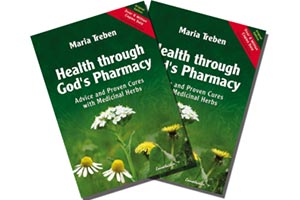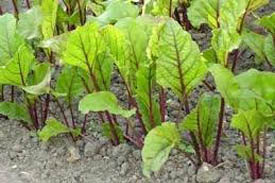Gardening: Seeds of Life II
 Now that you have collected your old-last year’s seeds we are going to test them to see if they will grow. This is what the big time growers do, and what we do, but on a smaller scale in the kitchen.
Now that you have collected your old-last year’s seeds we are going to test them to see if they will grow. This is what the big time growers do, and what we do, but on a smaller scale in the kitchen.
The first thing I recommend is to make a list of all the separate seed packs for all the different vegetable, herb and flower seeds. This is the check off list to which you will annotate the viability of the test seeds and if you want to buy more of the same this season, or skip a season.
Next you will need a roll of paper towel, an indelible magic marker, and a shallow pan or plate, plus a squeeze plastic spray bottle.
Starting with early planting seeds such as sunflower, peas, carrots, scoroza, parsnip, beets, cabbage (Brassica), chard, mangles, onions, shallots, and chive, (not garlic). We will take ten seeds from each variety and place them in a wet sheet of paper towel then roll it up lengthwise. Place this in a pan or plate, or if you have a lot of paper test rolls you will use more than one plate, or pan. The next trick is to be sure and mark what is going to sprout in that paper wet roll so you might make a map, so to speak, listing each roll in the plates order-just like a plate full of hot dogs, all in a row.
Place the plate in a warm spot in the kitchen, or if you have your greenhouse going, you can use a warming seed starter electric mat, or maybe you bought one of the mini window shelf plant starter boxes. Try for 70 (o) F.
In ten days unroll the moist, warm, test rolls and count how many seeds sprouted. Old seed make take longer. Fresh new last season’s seed should start in a day or so. Count the germinated seed. Mark on the master seed list how many seeds started. If you have 8 out of 10 starts, that’s good reliable seeds. 1-3 seeds are poor, and then there is an average. Since I grow my own seed year-to-year I expect the best and after testing your own seeds from jar 1 through 5 years you will quickly learn what varieties remain viable and which die quickly. It does become an art form of sorts.
Little tiny seed dies early; big fat seeds usually last longer. Not surprising though if you have a jar of old and therefore weak seeds you do get a few plants they will not usually be big healthy plants. Use these rare old seed producers for next years seed crop. Generally the second year’s growth produces better seeds- so test again. Maybe you would like to start a logbook record for each variety.
After you have tested your early seed, and placed a new order to supplement your dead seeds you will be ready to plant on time. I gave up seed in the ground planting as much as possible when I started building greenhouses almost 40 years ago. I would rather set out plants, started from seed sown in the greenhouse flats. If you are moving in this direction you would start onions by February and have sets out at your convenience, keeping in mind that weather is always unpredictable and you may not be able to plant or sow anything until May. If it is already growing in your greenhouse seed flats you are ready to go. True, seed planted directly in the garden does form better root structure and may produce better plants, but the weather guess is the deciding factor. I put my money, when I can, in the greenhouse concept.
While you are musing this concept over consider that it would have been ideal last fall to have prepared your garden beds in advance so that while you are in a hands and knees position this February the ground is leveled, fertile, and requires only easy hand made furrows to set seed. If you did not do anything, you are not going to be able to till in the wet muck of winter. This is one of the big reasons I like garden beds, 4’X10’ in my current garden and boarded, or blocked in so I can slip a plastic cover over as a hoop structure in case of really flash flood rains-which wash seeds away-and prevent late hard freezes. For my world wide web Dear Readers my growing zone may be different that yours. We are in a growing zone 6, although I think it is really a 5 on my side of the mountain.
However all is not lost, you can plant early seed when you can, you will just have a later crop. Unfortunately the late crop precludes you from a second planted fall crop unless you have more beds-more space. You can see gardening is a year round fascinating project.
Before the germination test above, it used to be, and probably the “sinking” test is still used for many larger seeds. Seed that is dead is hollow and floats. Viable seed will sink. Therefore you can take a ten seed sample of your test seed, drop it in a water container that you can see the bottom in, such as a large glass-cooking pan. The floaters are no good. Skim them off and throw them away. Record this in your garden seed logbook for what jar you are testing. The sinkers can be retrieved, but must be dried if you plan to plant them, but do not return them to the jar with the other seeds. Mold will appear and destroy your expensive seed.
After a few seasons with your own seed program you may want to take the, (example) 5 jars of tomato Black Krim Russian Tomato seed and pour it all into one jar. Sure why not. Saves space. As long as you have determined how much you want to save. Believe me it does not take long before you have amassed so much of your own seed that you start to think of selling it or giving it away. I think five years of stockpiling a seed variety is enough if your tests and storing facilities determine it to last that long. I will exclude beans, which store for years and years. Clover lasts for generations it seems. If you contact your local Farm Extension Office they will have a bulletin on seed life for your area. However, that is under ideal conditions. Set your own rules and stick to them. Recall last week I had mentioned I pitched lots of old seeds, most still viable, but I was seeking to also find new vigor from reliable Seedsman. In the laws of genetics you can keep inbreeding animals and plants, but in time it is nice to bring in a new gene or two. Plus it was time for me to update my ideas on storage in the old milk house.
This is of course all a wonderful year round Home School experience for children who will incorporate a better understanding of life’s cycle. I had often thought I was wasting my breath on all of our 16 (foster) children, but as the years slipped by my lecturing and drumming apparently paid off, as I would overhear them lecturing and drumming others. Life goes on. Keep up the beat.
The Second Book is what I was referencing 2 weeks ago. “THE PEOPLE’S HOME LIBRARY” A library of three practical books (hardcover). This is a hundred year old copy that I found on Amazon.com book section following my read of an old neighbor’s copy in sad repair. I bought a good copy for thirty dollars and they have other copies in finer condition for fifty, or so dollars, and up. The medical section book remains amazing although the treatments at the time are dubious today. I did like the herb section as that was a state of the art then and does give dose amounts. Advice is liberal and most certainly needed in today’s lifestyle. The identification of diseases is paramount. The next book on cooking with recipes and such will interest the lady of the house. Lastly an excellent Veterinarian section covering cattle, sheep, horses (very interesting), and chickens is most informative even for today.
A free copy of “The People’s Home Library” can be found from Cornell University Library in pdf format at this link
This book will engross you. Go to Amazon.com for different buying options, click here
There are not many of these books left. So do not drag your feet if you want one. I guarantee if you are a back2theland person, this is a must have book in your library.
We will continue on seeds next week.
God Bless,
Mark Steel
COPYRIGHT: 2010, Back2theLand, Mark Steel



